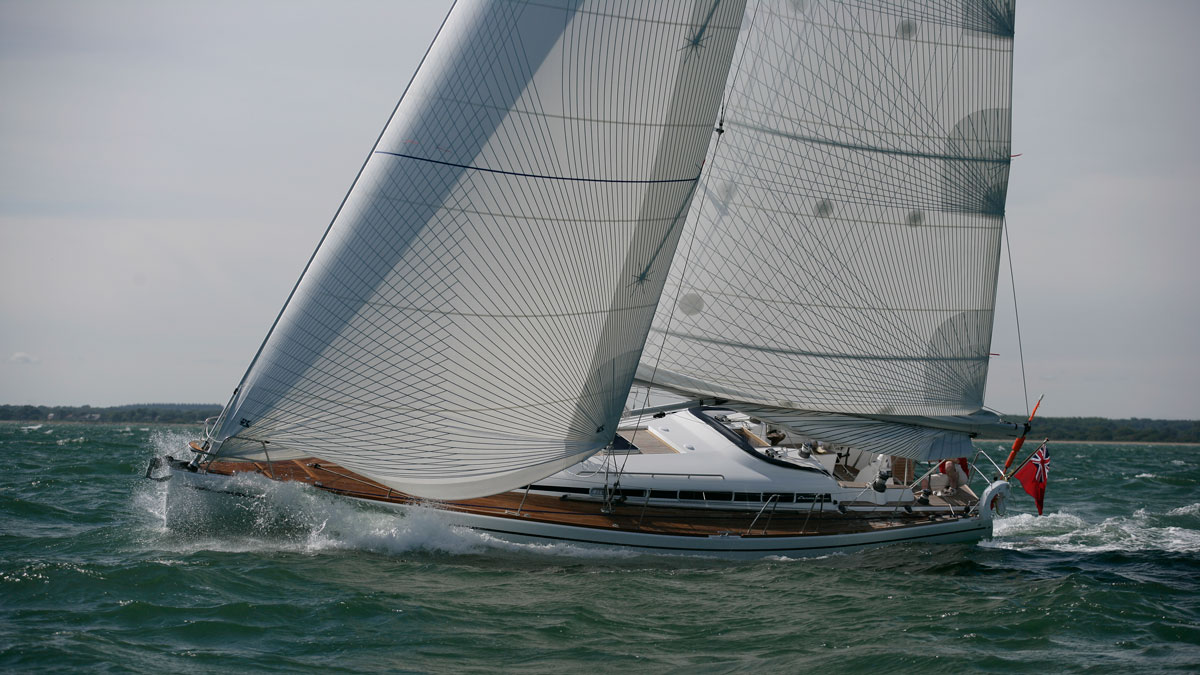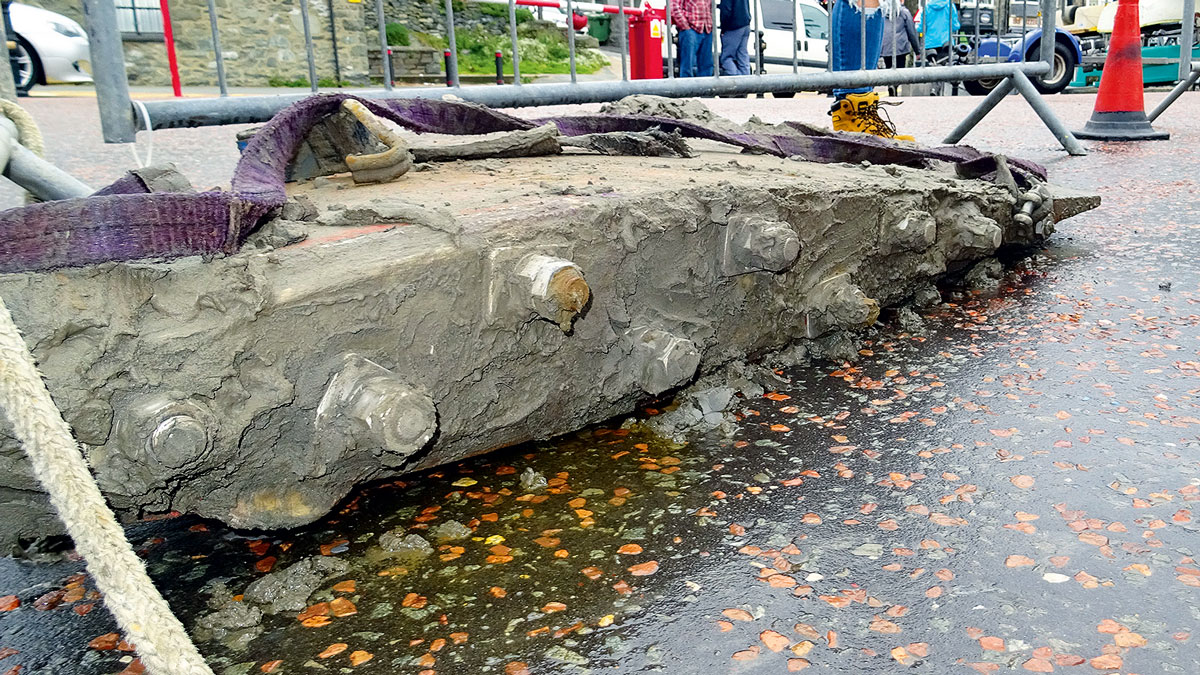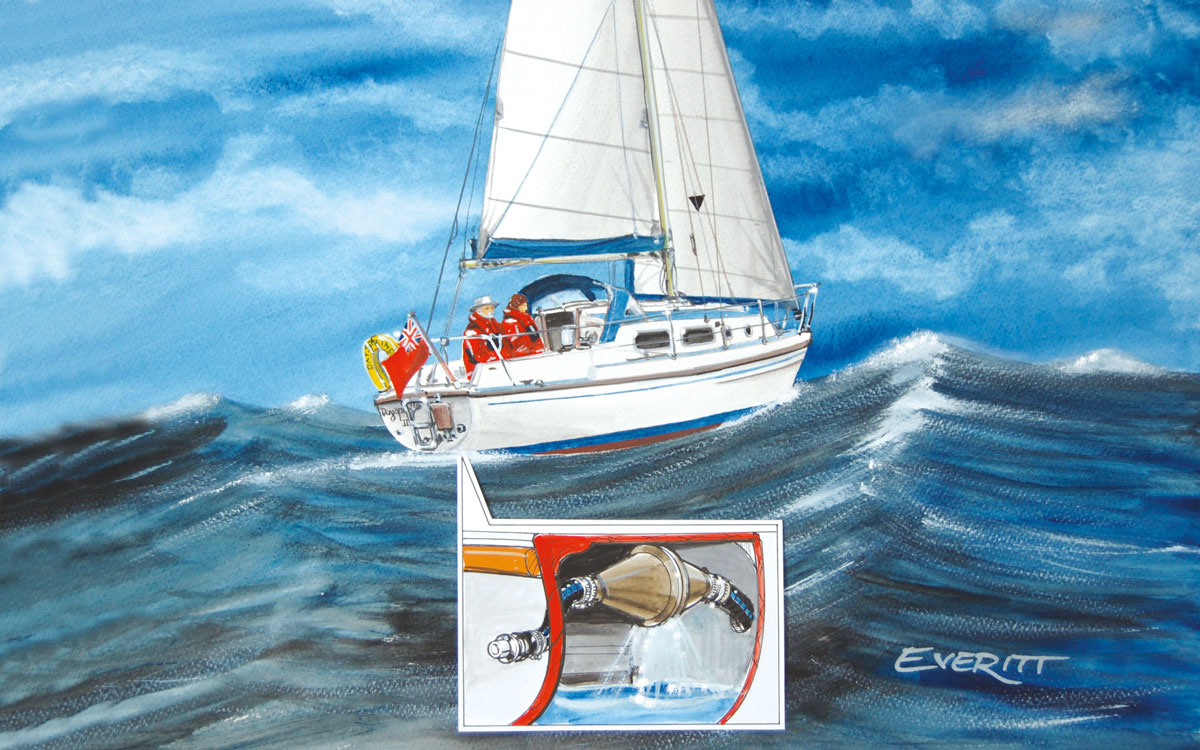Ingmar and Katarina Ravudd tell PBO about the steps they took to save their Arcona yacht after a broken rudder stock punched a hole in the hull, causing the boat to sink
Ingmar and Katarina Ravudd were sailing their Arcona yacht, IdaLina from Panama to French Polynesia when a loud bang indicated that not all was well on board.
Without warning, the aluminium rudder stock on the Arcona 460 broke; the boat was 200 miles from making landfall in Marquesas, French Polynesia.
The Swedish couple last checked the Jeffa spade rudder and bearings in January 2023 while IdaLina was on the hard in Trinidad. The boat was antifouled with Coppercoat, but Ingmar said they had followed the instructions from Jeffa, painting epoxy up to 15mm on the aluminium, and using a non-metallic antifouling paint 5cm around the rudder.

The Arcona yacht, IdaLina on the first day Ingmar and Katarina sailed her. Credit: Katarina Ravudd
“I was down below and I didn’t hear the sound. People have asked us if we hit something but I heard no sound at all inside the boat. Ingmar heard a short, sharp sound underneath where he was standing. He called me and said “Look at this, I have no rudder” and he could turn the wheel with a finger.
My first thought was the chain had snapped so I opened up the hatch and the rudder stock was broken immediately below the steering quadrant inside the lazarette. That was not what I expected to see,” explained Katarina.
According to the Arcona website, the Arcona 460 rudder is made of glass fibre with multiaxial roving, and filled with polyurethane foam. The rudder stock is made of water-resistant aluminium, laminated into the rudder and friction is minimised due to self-aligning roller bearings. The rudder is also supported axially by ball bearings.
Katrina contacted two nearby Swedish boats – Pacific Wind and Yaghan – advising them of their situation. At the time, they were sailing in 20-knot winds, with occasional squalls gusting 27 knots and 2.5m waves.

The broken rudder stock. Credit: Katarina Ravudd
Initially, Ingmar and Katarina decided to rig lines from winches to the rudder to provide steering; at this point, there was no indication that the boat was taking on water. They had already dropped the boat’s sails and turned off the autopilot. They also had a Hydrovane self-steering system which could have been used as an emergency rudder.
“Our idea was to fix the rudder; to take a line from the winch down through the upper bearings to below the lower quadrant for the autopilot to lift it up and fix it as close as possible to the hull. As the rudder stock is mounted inside, the movement of the broken upper part of the rudder stock was restricted due to the middle floor made of marine plywood. Before we were ready it suddenly dropped 10 cm, and unsupported, the rudder stock had much more movement, which caused the lower quadrant to get stuck into the protecting polyester cylinder around the stock, and the force broke the protecting polyester cylinder free from the hull. It was about 1.5 hours from the moment it broke until the rudder stock dropped down, and that was when the big problem started,” explained Ingmar.
The couple removed some of the glassfibre and rubber sealing to gain access to the lower quadrant. By now, it was clear the Arcona yacht was taking on water; they removed the four bolts that held the quadrant together so they could push down the rudder to try and patch the leak.

The Arcona yacht, IdaLina was fitted with a Hydrovane self-steering system. Credit: Ingmar Ravudd
“The glassfibre cylinder [which holds the lower bearings and protects the rudder stock] was totally broken and the aluminium tube of the lower bearing was separated from the other parts. There were sharp parts from the glassfibre that had broken,” said Katarina.
Initially, they tried to use an inflatable repair kit to plug the hole, but the part in the valve to blow it up was missing. Instead, they used a diver’s surface marker buoy, but sharp plastic punctured it.
“We had to use the sealing equipment we had without being able to inflate the sealing ring. It consists of a stick with a rope tied in the middle that you thread through the hole. The line passes through the centre of a round flat plastic disc with a clam cleat on top. It was tightened tightly over the hole. We pushed the disc down with bridge fenders and other things we had available. However, the water pressure caused the disc to leak when the stern pumped in the waves,” said Ingmar.
At the same time, the Arcona yacht’s bilge pump and a separate 230V bilge pump were struggling to cope with the rate of water ingress and needed attention; debris including food can labels had clogged them.
Although Ingmar cleared the problem, it became increasingly obvious to both Ingmar and Katarina that they needed to shift their focus from saving the boat to saving themselves. From the boat initially taking on water, it took 1.5 hours for IdaLina to sink.
“It was hard to say we would not be able to save her, and we would have to save ourselves instead. That was the hardest part,” said Katarina.
“I called up Pacific Wind, and I told them, “We will sink; we are taking on water”. The water was already 8 inches down below. We were never afraid. We were so lucky; apart from the boat sinking all of the circumstances were in our favour. We cut the string between the raft and IdaLina four minutes before she went down and then Pacific Wind came, arriving just as she was sinking.”

It took 1.5 hours for the Arcona yacht, IdaLina to sink. Credit: Ingmar Ravudd
25 minutes later, Katarina and Ingmar were safely onboard Pacific Wind.
As part of their usual cruising plans, the couple already had two emergency grab bags with the boat’s papers, their passports, and emergency gear. In addition, they packed six extra bags with food, clothing, computers, their mobile phones and water.
Reflecting on the experience, Katarina said she would have done things differently.
“In my first call to Yaghan, who were 12nm ahead of us, they asked if we wanted assistance and I said no. Today, I would have said yes. I would also make sure I packed our multi-purpose suits and our money with us. We had survival suits and multipurpose suits as we planned to go to Alaska, but in hindsight, we should have taken multi-purpose suits with us as although we spent 25 minutes in the raft, it could have been a lot longer if Pacific Wind had struggled to find us.”

A tired Ingmar safely on board Pacific Wind. Credit: Ingmar Ravudd
Ingmar would also equip the boat with a higher capacity pump and ensure there was a watertight bulkhead around the rudder.
Arcona is still investigating the sinking. Other sailors have also not been shy in coming forward with theories and comments on the sinking of the Arcona yacht.
“We get a lot of people telling us what we should have done, that it was no problem to sail a boat with a hole in the hull for 200nm,” said Katarina. “Often when you think of a hole in your boat, it is a through-hull fitting which has broken and for that, you have lots of plugs and bungs. But in our case, we suddenly had a hole with a 6-inch diameter which is jagged. People have told us we should have dived under the boat to plug the hole but in the conditions we were in, that would have been wishing death.”
In an earlier statement, the CEO of Arcona Yachts, Fredrik Malmqvist, said, “At Arcona Yachts, safety is our priority, and we are therefore taking this very seriously.
“We understand from the Arcona 460 owners that the rudder stock was broken, however, we don’t yet know how or why. We are working closely with our suppliers and key people to immediately investigate this serious incident further.
“Our thoughts are with the owners, family and crew and we send our sincere thanks to the crew of the nearby vessels that assisted with the rescue. As soon as we know more, we will release further information.”

Ingmar and Katarina safely in Hiva Oa in the Marquesas Islands, French Polynesia. Credit: Katarina Ravudd
Ingmar and Katarina are now looking for another boat, although their plan to sail around the world is over.
“Ingmar found me a boat, a First Seascape 24 called Unsinkable which would be perfect,” said Katarina. “We are planning to go back to French Polynesia for a few weeks and hopefully next summer we may be able to do Alaska for a few weeks or so, but we are not going to buy a new boat to continue going around the world.”
Continues below…
Arcona 460 sinking prompts investigation by Arcona Yachts
The Swedish-flagged Arcona 460, IdaLina sank in the Pacific Ocean after the rudder stock failed, punching a hole in the…
Osmosis on a boat: will it cause my vessel to sink?
Katy Stickland talks to surveyor Ben Sutcliffe-Davies about why osmosis can be an indicator of high moisture content in fibreglass
‘The steering wasn’t working. I felt my stomach sink’ – rudder failure in the Pacific
Steering loss aboard a Maxi 120 mid-Pacific reminds Charlie Pank of a previous rudder failure on a Beneteau Idylle many…
Learning from experience: Chasing the leak on a sinking boat in Lyme Bay
Dr Brian Johnson became quickly and intimately acquainted with his engine’s silencer when it threatened to sink his Westerly Pageant…








